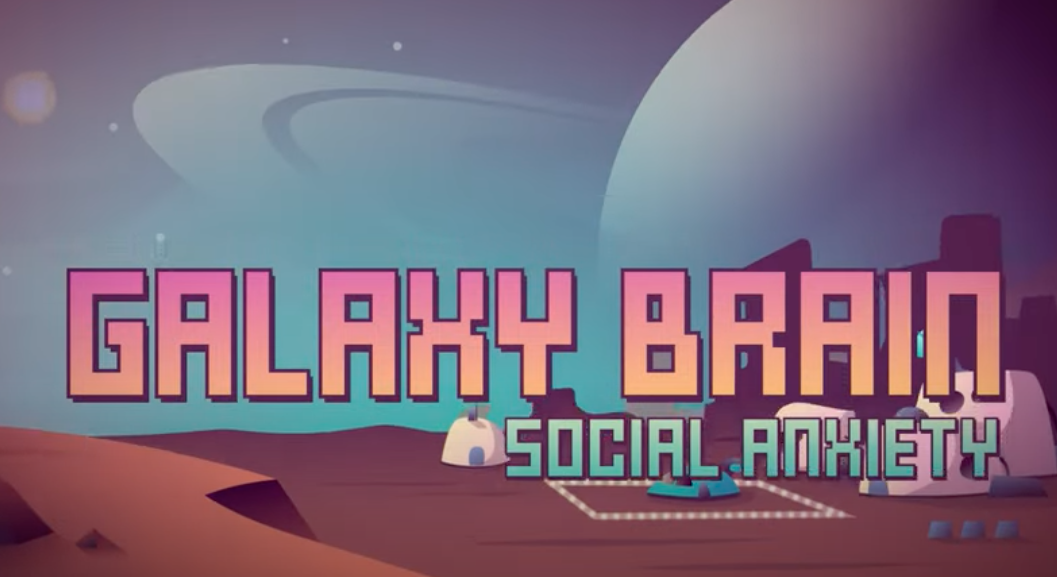Our two Caretoons series are a unique resource for parents at home, educators in the classroom, or healthcare professionals. Using fun, animated characters the cartoon episodes introduce youth to different anxieties they may be experiencing. The first episodes of both Drexal the Alien and Time Travelling Pizza discuss social anxiety in an approachable way for youth and children.
In Galaxy Brain, Episode 1, Drexal the Alien has lived on an isolated moonbase for a long time and feels nervous about a virtual meeting with his friends. He makes excuses to avoid attending as his social anxiety grows, stating that he feels safer being alone and worrying that everyone will laugh at him.

Luckily, Drexal’s computer sidekick is there to calm him down and explain that it’s normal for him to feel worried. He also tells Drexal that everyone feels embarrassed or nervous about the right thing to say sometimes, but that feeling rarely lasts long. In the end, Drexal attends the virtual event, sees his friends, and has a wonderful time!

In Time Travelling Pizza, Episode 1, Chris Crust is getting ready to go to a barbecue but is worried he’ll embarrass himself at the event. Amidst his worrying, he gets a visit from himself—from the future! Future Chris reassures him that he’s going to have a fun time, even though he felt anxious and thought it would be easier to stay home. He tells Chris not to let his anxieties stop him from doing what he wants to do and empowers him to attend.
Social Anxiety and the Pandemic
The pandemic has undoubtedly been rough on young people. Stats Canada even found that youth have had the largest decline in mental health since the beginning of the pandemic.
As children and youth navigate isolation due to the COVID-19 pandemic, virtual online classes and meet-ups can cause anxiety. It’s important they know that it’s normal for them to feel anxious, and they can still have fun connecting with friends virtually. Checking in with youth and reassuring them that everyone feels this way sometimes may help alleviate their concerns.
The gradual return to ordinary in-person social situations can also create fear and concern. Use Caretoons to check in with youth and see where they comfort level is. Using humour and heart, our Caretoons allow you to easily start a conversation about mental health. Having an open dialogue allows you to give youth the tools they need to cope with anxiety at school and in their daily lives.
Keeping Open Communication
It can be tough to identify when children or youth are struggling with anxiety, especially when the more obvious signs are hidden. Our Caretoons animated series show examples of various types of anxiety including social anxiety, health anxiety, contamination OCD, and more.
Share Caretoons with students to help them understand what they are feeling, recognize symptoms of anxiety, and see the impact it has on their lives. Once youth identify with the characters, they can more easily ask for help and share their own fears.
One of the tools we recommend is the CARD system (Comfort, Ask, Relax, Distract), which can be used at home or at school to help kids plan ahead and cope with their anxiety. Learn more about CARD here.
Is Social Anxiety Normal?
While having anxiety around social situations is normal, there is a point where it can become a long-term problem. Usually, this means that children are getting more anxious as they mature, rather than less anxious. A combination of excessive anxiety and life disruptions (such as academic failures and refusing to go to school) let us know that this is more than normal anxiety and that action needs to be taken.
You can find out about the signs of excessive anxiety or distress that you may see in children and youth in our informative article here.
By normalizing anxiety, including social anxiety, Caretoons opens the door for conversation and reassures teens and pre-teens that talking about their fears and asking for help is okay. Sharing their feelings with friends, parents, healthcare providers, or educators can help youth feel less alone and empowered to ask for help when they need it.
“We wanted to create resources to normalize the anxiety they feel that were as entertaining as anything they would normally watch on TV. We also want them to recognize that it’s perfectly okay to ask for help.”
–Judith Law, CEO of Anxiety Canada
More Resources for Anxiety
Working together, you can use the free My Anxiety Plan (MAP) program for children or teens to learn practical strategies and tools to manage their anxiety. Six units take you through a step-by-step anxiety management program based on cognitive behavioural therapy (CBT) and tackle difficult feelings at your own pace.
If you want to learn more about anxiety in children, teens, and/or adults, take a look at our resources below with useful information and ideas for teens, parents, educators or healthcare providers.
Educator Resources – Educator tips, articles, and resources.
Resources about Anxiety in Youth – Information to help youths manage anxiety, plus self-help strategies for several disorders.
Resources about Anxiety in Children – Practical strategies and tools to help you manage your child’s anxiety.
